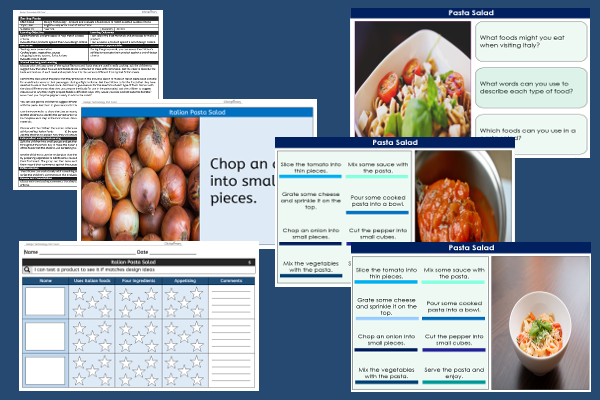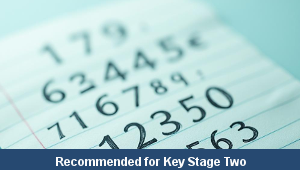Lesson Six – Pasta Tasting

This design technology teaching pack for Key Stage Two gets the children to prepare and evaluate a food snack to match the selected success design criteria and suggest changes and improvements to the recipe.
The class can work in small groups to prepare, taste and then review their completed pasta salads to match the specific theme to evaluate against the selected success criteria.
Download this teaching pack including a lesson plan, classroom activities and an interactive presentation to prepare and evaluate a food snack to match the selected success design criteria and suggest changes and improvements to the recipe
Activities in this teaching pack include display posters to sequence a set of instructions needed to complete a recipe for a pasta salad and a worksheet to evaluate a food snack against selected design criteria and suggest future changes and improvements to the recipe.
The interactive presentation can be used to explore how to prepare and evaluate a food snack to match selected success design criteria and suggest improvements to the recipe.
This lesson is part of a design technology scheme of work to get the children to design and prepare a recipe for a pasta salad for an airline meal using different foods that are grown and produced in Italy. There are teaching activities for shared learning, differentiated worksheets to support independent learning and interactive presentations to introduce concepts and key skills.
-

Determinant Lists
Explain and model how to make lists of objects used and found in different locations to match the correct determinants of a and an
-

English SPAG Assessment
Assess abilities in composing sentences for fiction and non-fiction using the correct spellings, punctuation marks and grammar vocabulary phrases
-

Maths Arithmetic Assessment
Assess abilities in solving arithmetic number problems for addition, subtraction, multiplication and division when working with informal and formal written calculations
-

Environment
Identify and describe some of the special landscapes and locations that can be found in the world and reflect on how they can be protected and preserved for the future
